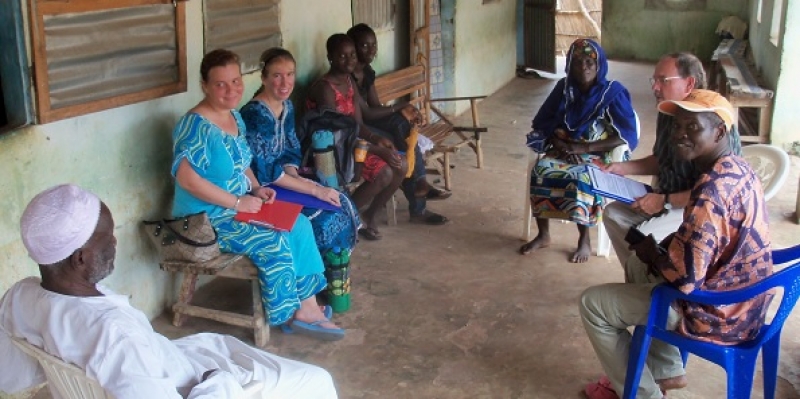Finding unreached people

Reaching unreached people has its challenges, Susie says. Sometimes, she explains, it’s pretty difficult to figure out just who those unreached people actually are and where exactly they are located.
“For example,” Susie illustrates, “where I live, there are 60-70 people groups in a country roughly the size of Colorado. Which of those have had the opportunity to hear the gospel and which haven’t? What language do they speak?”
And there are other questions to be asked, she points out. “Do they also speak another language well enough that they could have access to the gospel in that language? Are they teaching that language to their children, or will it probably fizzle out in the next 20-50 years?”
“In order to develop a wise strategy in the sending of missionaries, we need to know,” Susie concludes.
And that, she says, is the purpose of a People Group Assessment. Terms like outgroup impact, language distinctives, and ethnolinguistic vitality describe some of the processes of employing research data and wisdom to determine how best to steward the responsibility of bringing the gospel to these people groups.
Poring over a possible people group in extensive initial research is a huge project. Information is gathered from missionaries, mission agencies and anyone who has been connected at some point with the people group. Reports are written and criteria is sorted, graded and evaluated.
Subsequently, Susie says, a visit is planned for an assessment team to spend a few days in the people group. “There’s a lot of planning that goes into this trip. Then we go and talk to government officials, village chiefs, many tribal people and any pastors or missionaries that we can find. Based on this visit, if the field leadership decides that it truly is a least-reached people group, the people group is placed on a list as a possible place for a new team of missionaries to go.”
Though she has been in West Africa for only a little over a year, Susie has already been privileged to be part of several of these assessments during her time there.
“It’s neat to see different people and villages and places,” she says. “I remember my favorite village on one trip. Most of the people had already gone to the fields for the day, but those who remained all gathered around and helped the chief answer questions. After that, we talked to people individually. They were more than willing and very helpful. Many expressed the desire for someone to come and write their language. They are afraid it will disappear if it isn’t written down.”
“And before we left,” Susie adds, “they even gave us a chicken as a thank-you gift.”
On another assessment trip, Susie’s team visited a small community and arrived on the day of a funeral. The villagers were very friendly, asking Susie and her co-worker, Jen, if they would like to help make lunch for all the guests, and then inviting them to stay and eat.
“So hospitable!” Susie notes. “It was my favorite village on that trip.”
Among her least favorite memories of these trips was the night she awoke and felt something crawling on her back. A light revealed that the “something” was a mouse. After that experience, Susie declares, “I insisted on putting up the mosquito net while we slept.”
Susie is a relative new-comer to People Group Assessment trips, but she has already found that her travels to remote villages to gather information about people groups is a very rewarding ministry. “I’ve enjoyed working with others on the team,” she says. “I’m glad I can be at least a small part of connecting missionaries with people who need to hear the Good News about Jesus.”
You can help ensure that missionaries are working in the most strategic places by helping fund people group assessments. You can give today.
